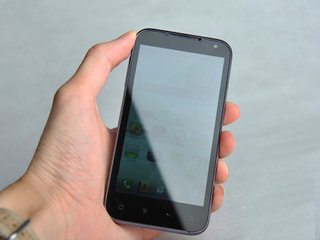
This year, the number of mobile phones on cell networks is expected to surpass the Earth's population.
预计今年自带上网功能的手机数量将超过地球总人数。
"More people now own cell phones than actually have access to working toilets."James Meadow, a microbial ecologist at the University of Oregon.
“用手机的人比会用马桶的人还多”俄勒冈州立大学的微生物学家詹姆士·梅多指出。
Hidden in the data is the reality that some people work on their phones…on toilets.
这还从侧面说明了,一些人是在上厕所的时候玩手机。
If that grosses you out, consider this:"So it turns out we're just really leaky animals. We just, we leaveour bacteria everywhere we go."Including, of course, our phones.
如果你觉得听上去很恶心的话,可以这样想想:人本身就是走到哪就把细菌带到哪的动物,手机上自然也会留有人的细菌。
Meadow and his colleagues took a census of the bacteria on thumbs and index fingers of 17 volunteers—and on their smartphone touch screens.Overall, they ID'ed over 7,000 types.
梅多和他的同事在17位志愿者的大拇指,食指以及他们的智能触屏手机上检验出7000多种细菌。
Looking at just the most common bacteria, those that appear more than 0.1 percent of the time,
以最常见的细菌为例,超过0.1%的细菌都属于常见细菌。
they found an 82 percent similarity between the microbiomes of fingers and phones.
手指上和手机上有82%的微生物是相似的。
Meaning our phones are a pretty good mirror of ourselves, microbially, at least. The results appear in thejournal PeerJ.(James F. Meadow, Adam E. Altrichter and Jessica L. Green, Mobile phones carry the personal microbiome of their owners)
这说明,手机就像我们的一面镜子,至少从微生物上来看,手机反映出人自身的微生物分布情况。这项研究结果发布在Peer J杂志中一篇名为“手机---人类微生物群的携带者”的文章中。
"We have always been covered in bacteria… and we will always be covered in bacteria."So the fact that our phones are also covered in bacteria is no reason for concern.
我们无时无刻不在细菌的笼罩下,这一事实也不会随着时间而改变。所以,手机上带有细菌的事实也就不足为奇了。
In fact,the researchers say that mobile phones may hold untapped potential as personal microbiome sensors.
据研究人员称,作为机主自身微生物群感应器的手机其潜能是无限的。
App developers, take note.
手机应用程序的开发者们要注意了。
Thanks for the minute for the Scientific American 60 Seconds. I'm Christopher Intagliata
感谢收听,我是克里斯托夫·因塔格里塔,再见。













